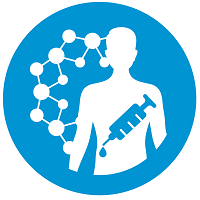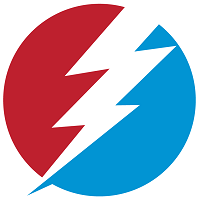Preclinical, Clinical, and Translational Sciences
Rapid Fires: Designing and Delivering Effective Clinical Trials for Specific Populations 1
Nemolizumab: Pediatric Extrapolation to Waive Placebo-Controlled Studies in Atopic Dermatitis
Tuesday, November 11, 2025
3:30 PM - 3:45 PM CT
Location: 225 AB

Nathalie Wagner, MSc (she/her/hers)
Head of Clinical Pharmacology
Galderma R&D
Dallas, Texas
Rapid Fire Speaker(s)
This presentation illustrates the use of pediatric extrapolation framework outlined in the recent ICH E11A guidance (2024). During the clinical development of nemolizumab, the pediatric population was assessed in a stepwise approach, beginning with adolescents (12–17 yo), followed by younger pediatric subgroups (7–11 yo and 2–6 yo), and subsequently infants (6–23 months).
The efficacy of nemolizumab in AD was initially established in 2 pivotal placebo-controlled Phase 3 studies conducted in adults and adolescents with moderate to severe Atopic Dermatitis (AD). Supportive evidence for the efficacy and safety of the 30 mg every-four-week regimen (with a 60 mg loading dose) was provided by clinical PK results, population PK, PK/PD modeling for efficacy endpoints, and exposure-safety analyses. The population PK model evidenced higher nemolizumab exposure in individuals with lower body weight. However, PK/PD simulations demonstrated that the difference in systemic exposure due to body weight had no clinically meaningful impact on efficacy. Nemolizumab was subsequently approved for the treatment of moderate -to-severe AD in patients of 12 yo and older with no dose adjustment based on body weight (US: 2024, EU: 2025).
In the US, post-marketing requirements specify further clinical studies in pediatric patients below 12 yo. Pediatric extrapolation was employed for this group, as the disease, drug pharmacology, and anticipated response to nemolizumab are sufficiently similar across age groups. Adults and adolescents from the placebo-controlled Phase 3 trials served as the reference population for pediatric extrapolation, with pediatric population below 12 yo defined as the target population for extrapolation framework.
An open labeled clinical study was conducted in 2-11 yo children to support nemolizumab approval in this age group. This study included safety and PK as primary outcome and measurements of changes in efficacy parameters from baseline as secondary outcomes. The existing population PK and PK/PD models developed from adult and adolescent data were updated using emerging PK data from 2-11 yo children (subgroups 7–11 yo and 2–6 yo). The pediatric population PK model provided an adequate description of nemolizumab PK profile in pediatric subjects. Age group (children [2-11 yo], adolescents [12-17 yo], adults [18-65 yo], elderly [>65 yo]) was not identified as a clinical meaningful covariate in the PK/PD model, confirming a similarity of exposure-response relationship between adult and pediatric subjects. These findings provided a framework for using extrapolation as a tool to support pediatric drug development, i.e. the efficacy and safety profiles observed in adults and adolescents can be transposed to younger pediatric subjects when exposed to similar nemolizumab concentrations.
Therefore, the pediatric dose selection is based on matching the exposures between body weight categories of children below 12 yo with the reference population enrolled in the phase 3 studies (adolescent and adults) using steady state pre-dose concentration as exposure metric. Similarly, population PK simulations were conducted to select the dosing regimen in infants (6-23 months old) based on matching exposure with adults and adolescents.
The efficacy of nemolizumab in AD was initially established in 2 pivotal placebo-controlled Phase 3 studies conducted in adults and adolescents with moderate to severe Atopic Dermatitis (AD). Supportive evidence for the efficacy and safety of the 30 mg every-four-week regimen (with a 60 mg loading dose) was provided by clinical PK results, population PK, PK/PD modeling for efficacy endpoints, and exposure-safety analyses. The population PK model evidenced higher nemolizumab exposure in individuals with lower body weight. However, PK/PD simulations demonstrated that the difference in systemic exposure due to body weight had no clinically meaningful impact on efficacy. Nemolizumab was subsequently approved for the treatment of moderate -to-severe AD in patients of 12 yo and older with no dose adjustment based on body weight (US: 2024, EU: 2025).
In the US, post-marketing requirements specify further clinical studies in pediatric patients below 12 yo. Pediatric extrapolation was employed for this group, as the disease, drug pharmacology, and anticipated response to nemolizumab are sufficiently similar across age groups. Adults and adolescents from the placebo-controlled Phase 3 trials served as the reference population for pediatric extrapolation, with pediatric population below 12 yo defined as the target population for extrapolation framework.
An open labeled clinical study was conducted in 2-11 yo children to support nemolizumab approval in this age group. This study included safety and PK as primary outcome and measurements of changes in efficacy parameters from baseline as secondary outcomes. The existing population PK and PK/PD models developed from adult and adolescent data were updated using emerging PK data from 2-11 yo children (subgroups 7–11 yo and 2–6 yo). The pediatric population PK model provided an adequate description of nemolizumab PK profile in pediatric subjects. Age group (children [2-11 yo], adolescents [12-17 yo], adults [18-65 yo], elderly [>65 yo]) was not identified as a clinical meaningful covariate in the PK/PD model, confirming a similarity of exposure-response relationship between adult and pediatric subjects. These findings provided a framework for using extrapolation as a tool to support pediatric drug development, i.e. the efficacy and safety profiles observed in adults and adolescents can be transposed to younger pediatric subjects when exposed to similar nemolizumab concentrations.
Therefore, the pediatric dose selection is based on matching the exposures between body weight categories of children below 12 yo with the reference population enrolled in the phase 3 studies (adolescent and adults) using steady state pre-dose concentration as exposure metric. Similarly, population PK simulations were conducted to select the dosing regimen in infants (6-23 months old) based on matching exposure with adults and adolescents.
Learning Objectives:
- This case study illustrates the use of pediatric extrapolation to support the development of nemolizumab in US for the treatment of atopic dermatitis in pediatric population from 6 months to 11 years of age. This is an example of the change in pediatric drug development paradigm described in ICH E11A Pediatric Extrapolation Guideline (2024)
- Pediatric extrapolation based on matching exposure is frequently used to select the pediatric dose for the phase 3 program. This presentation describes the use of pediatric extrapolation to waive placebo-controlled phase 3 studies in children with atopic dermatitis, thereby accelerating the availability of nemolizumab for pediatric use.
- Upon completion, participants will learn how the Model informed drug development models (PopPK and PK/PD) were used to improve clinical development in children and infants with atopic dermatitis treated with nemolizumab


